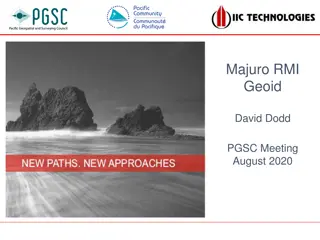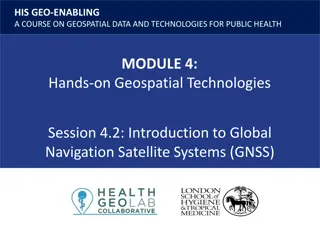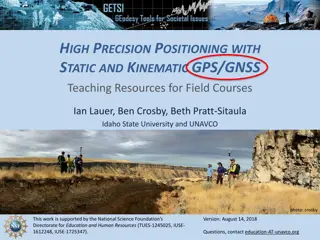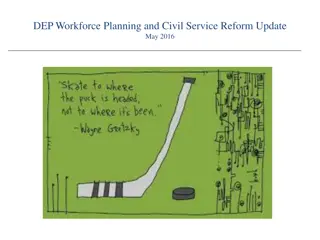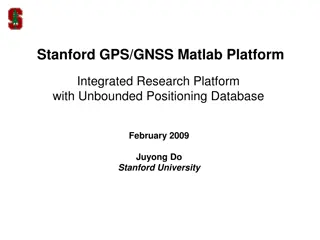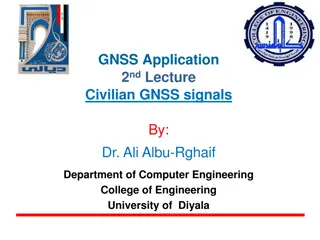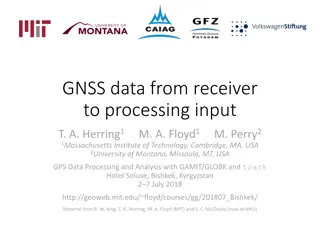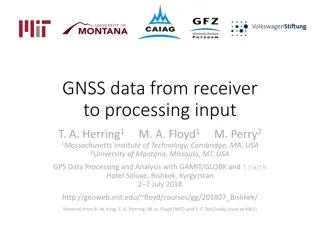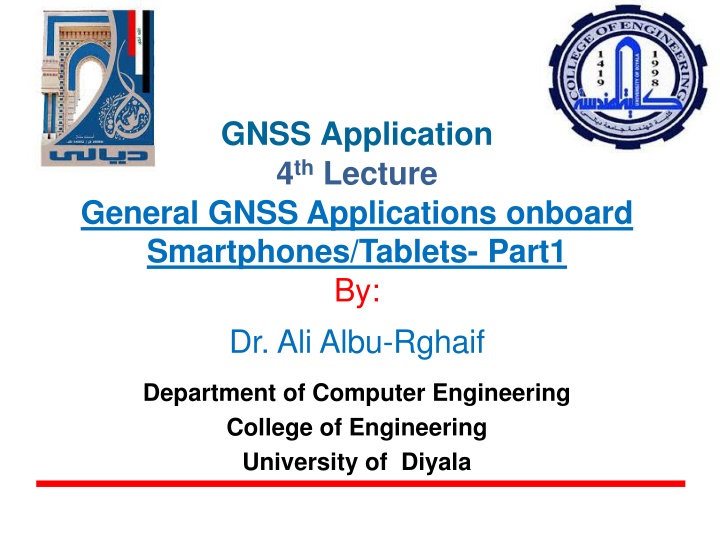
Location Based Services: Evolution and Applications in GNSS Technology
Explore the evolution and applications of Location Based Services in GNSS technology, focusing on the use of smartphones and tablets. Learn about the challenges, user interfaces, and the ongoing research agenda in LBS. Discover how location-aware services differ from location-tracking services and how they impact social networks.
Download Presentation

Please find below an Image/Link to download the presentation.
The content on the website is provided AS IS for your information and personal use only. It may not be sold, licensed, or shared on other websites without obtaining consent from the author. If you encounter any issues during the download, it is possible that the publisher has removed the file from their server.
You are allowed to download the files provided on this website for personal or commercial use, subject to the condition that they are used lawfully. All files are the property of their respective owners.
The content on the website is provided AS IS for your information and personal use only. It may not be sold, licensed, or shared on other websites without obtaining consent from the author.
E N D
Presentation Transcript
GNSS Application 4th Lecture General GNSS Applications onboard Smartphones/Tablets- Part1 By: Dr. Ali Albu-Rghaif Department of Computer Engineering College of Engineering University of Diyala
Outline Location Based Services Location Based Services Applications Outdoor/Indoor Environments Non-Intrusive User Interfaces Challenges 2 of 18
Location Based Services LBS Location-based services are any service that takes into account the geographic location of an entity. First, the term entity can be human or non-human, a non-human object that often needs to be tracked for logistical purposes. Second, there are always at least two entities involved in a location- based service. In a generic geographic grid (such as longitude and latitude), entity A is always in relative position to entity B. Location based services: ongoing evolution and research agenda 3 of 18
Location Based Services LBS Third, each of the entities can be either static or moving. Static can imply two things: either they are truly static or they are only temporarily static. Fourth, one of the entities, whether human or nonhuman, is always the object of LBS, that is, it is the entity about which location information is recorded. Moreover, one of the entities is always a recipient of the location information. Location based services: ongoing evolution and research agenda 4 of 18
Location Based Services LBS Location based services: ongoing evolution and research agenda 5 of 18
Location-Tracking Services vs. Position-Aware Services Location-tracking services provide information about a user s whereabouts to entities other than the user. while location-aware services supply the user (the information requester) with personal location data. Location based services: ongoing evolution and research agenda 6 of 18
Location Based Services Applications Location based services: ongoing evolution and research agenda 7 of 18
Location Based Services Applications Location based social networks (LBSN) The increasing availability of location-aware technology (e.g. GPS) enables people to add a location dimension to existing online social networks in various ways, e.g. uploading geotagged contents (e.g. photos, videos, and recorded routes), sharing the present location (e.g. Facebook, Google), commenting on an event at the place where it is happening (e.g. via Twitter), or leaving ratings/tips/reviews for a location (e.g. a restaurant) Location based services: ongoing evolution and research agenda 8 of 18
Location Based Services Applications Location based gaming (LBG) Typically, LBG maps real-world environments into a virtual world, where players must move in real life to explore the virtual world and accomplish tasks related to the game itself. The maps, tasks, and other contents presented on the mobile devices are adapted to the location of the player. According to the game objectives, players may collect virtual objects, such as weapons, ammunition, or treasures. Location based services: ongoing evolution and research agenda 9 of 18
Location Based Services Applications Location based fitness monitoring and healthcare Another rapidly growing group of LBS applications focuses on healthcare, particularly on outdoor exercise and fitness monitoring (e.g. Running app and Moves), remote health monitoring supporting dementia patients and their caregivers in wandering events, and emergency situation detecting and reporting (e.g. fall detection). Location based services: ongoing evolution and research agenda 10 of 18
Location Based Services Applications Transport LBS By tradition, transport has been one of the main application fields of LBS. Applications include those for driver assistance, passenger information, and vehicle management. Car navigation systems are probably the most popular LBS applications, which provide wayfinding assistance for drivers, and are still being improved with new features, such as real-time traffic information. For example, crowdsources traffic and road information to provide drivers with real-time navigation supports. LBS and tracking techniques have now been extensively used for vehicle management and logistic tracking. Location based services: ongoing evolution and research agenda 11 of 18
Location Based Services Applications Location based assistive technology LBS are also being used as assistive technology to enable visually impaired people, and disabled and elderly people to perform their daily living activities independently and to experience an improved quality of life. These assistive systems provide assisted-living functions, such as personalized navigation and wayfinding, obstacle detection, space perception, and independent shopping. With the increasingly ageing population, one can expect that more and more location-based assistive systems will be developed and employed in the future. Location based services: ongoing evolution and research agenda 12 of 18
Outdoor to Indoor and Mixed Outdoor/Indoor Environments In the early 2000s, research on LBS had been mainly focused on outdoor environments, also due to the lack of reliable indoor positioning methods. In recent years, LBS have become more and more popular not only in outdoor environments, but also in shopping malls, museums, airports, many other indoor environments, and even mixed outdoor/indoor environments. Different location sensor technologies have been developed and tested for estimating the location of a smartphone in indoor environments, such as Wi-Fi, RFID and Bluetooth Location based services: ongoing evolution and research agenda 13 of 18
Non-Intrusive User Interfaces Early LBS applications mainly communicated information to the users via visual (e.g. maps) and auditory (e.g. verbal instructions) interfaces on smartphones. Recent years have seen rapid advances towards more natural and non-intrusive user interfaces for LBS, particularly on the aspects of representation forms (e.g. visual, auditory, and tactile), interface technologies and devices (e.g. smartphones and smartwatches), and interaction modality (e.g. touch, gesture, and gaze-based). Location based services: ongoing evolution and research agenda 14 of 18
Non-Intrusive User Interfaces Emerging interface technologies in LBS Location based services: ongoing evolution and research agenda 15 of 18
Developer/Researcher Challenges The challenges can be classified into seven broad areas : Positioning Modelling Communication Evaluation Applications Analysis of LBS-generated data Social and Behavioral Implications of LBS. Location based services: ongoing evolution and research agenda 16 of 18
Summary As mobile devices and communication technologies seem to continuously be improved at a very fast speed, as well as the increasing smartness of our environments and cities (e.g. with different kinds of sensors), leads to expect the demand of LBS in different aspects of our daily life will continue to be very strong, which will push LBS towards the 4A vision (anytime, anywhere, for anyone and anything). 17 of 18
Reference Location based services: ongoing evolution and research agenda 18 of 18




